The term Arati is derived from the Sanskrit word Aratrika, meaning an act that dispels darkness.
Arati is an occasion for the devotee to acknowledge God as the illuminator of his life. Usually performed using small lighted lamps, the worshiper waves the lamp in a clockwise direction around the deity.
After waving he holds out the flame to other devotees present, who cup the flame and place their hands on their foreheads invoking god’s blessings. The unsaid prayer is that ‘the light that lit up the god may enlighten me with nobility in my every endeavor.’
Arati invokes the five elements of nature called Panchabhutas – air, water, fire, earth and space. The famous Ganga arati done alongside the Ganges in Varanasi explicitly symbolizes this significance.
The lighted lamp represents fire, the flowers the earth, the white yak-tailed fan represents space, the waving of the peacock feathered fan stands for air, and water finds its presence in the conch shell which in sprinkled over the assembled devotees. The accompanying joyous paraphernalia to an arati spreads blissful warmth of devotion.
The rhythmic singing, the ceremonious ringing of bells, drums and gongs, the odorous perfume of camphor, synchronized clapping, and the sublime burning of incense, all awaken the senses of devotees.
Lighted camphor carries particular meaning. Upon lighting up, camphor leaves no residue, implying the highest form of prayer, ‘I offer you everything of me in this birth so there nothing may be left of me for a rebirth.”
It is truly a prayer for leading from darkness to light.

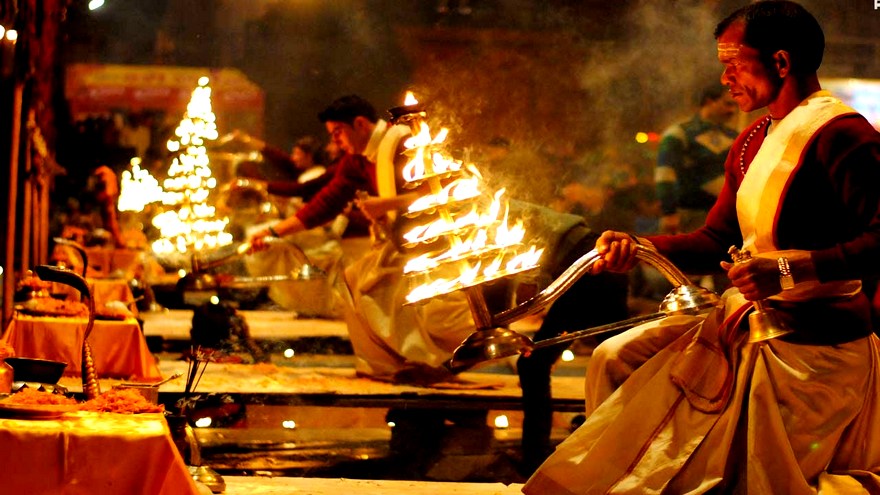
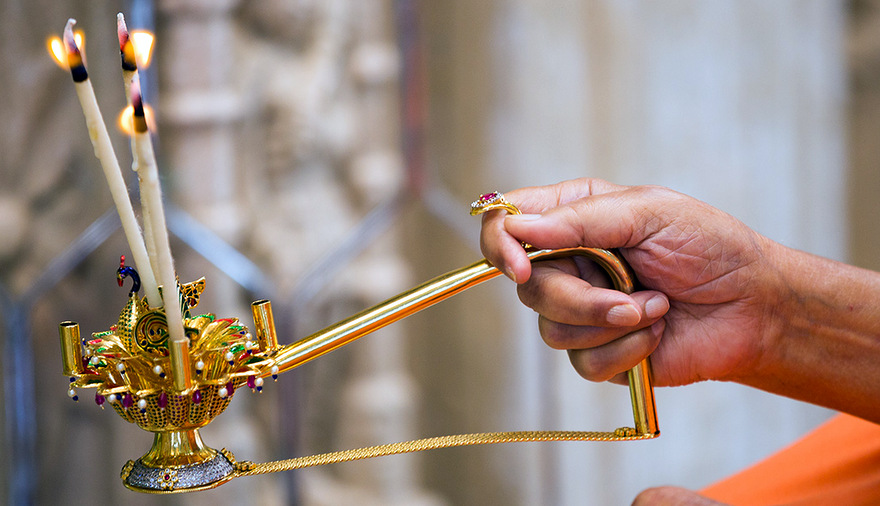
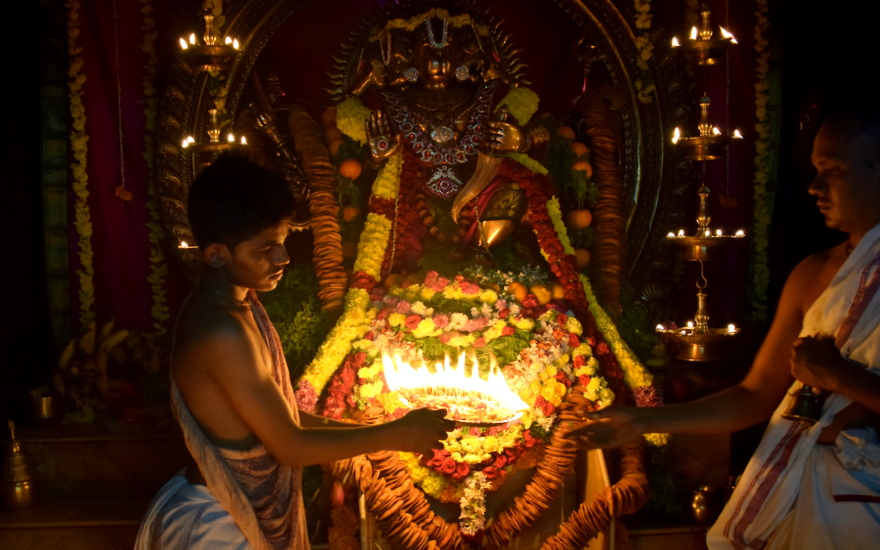
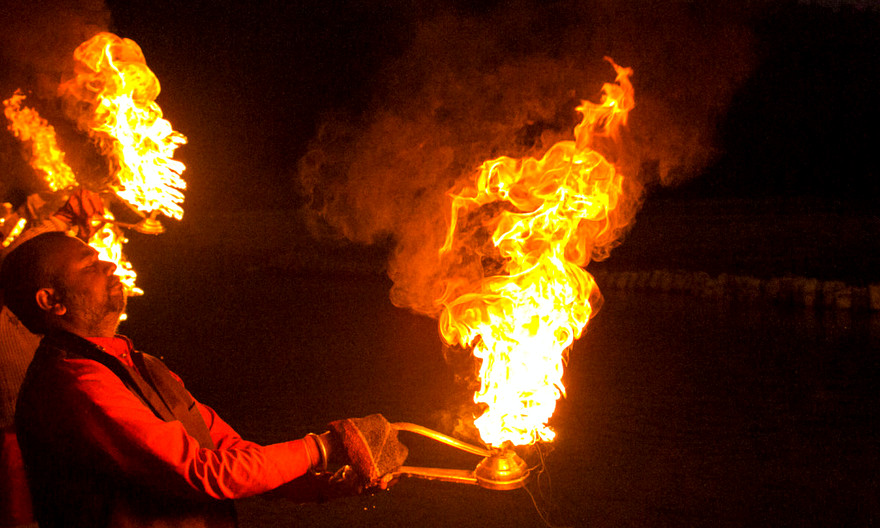
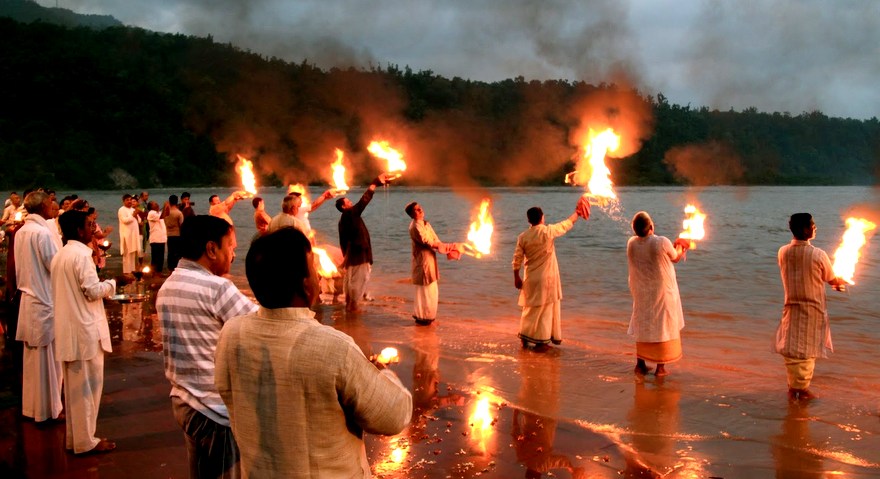
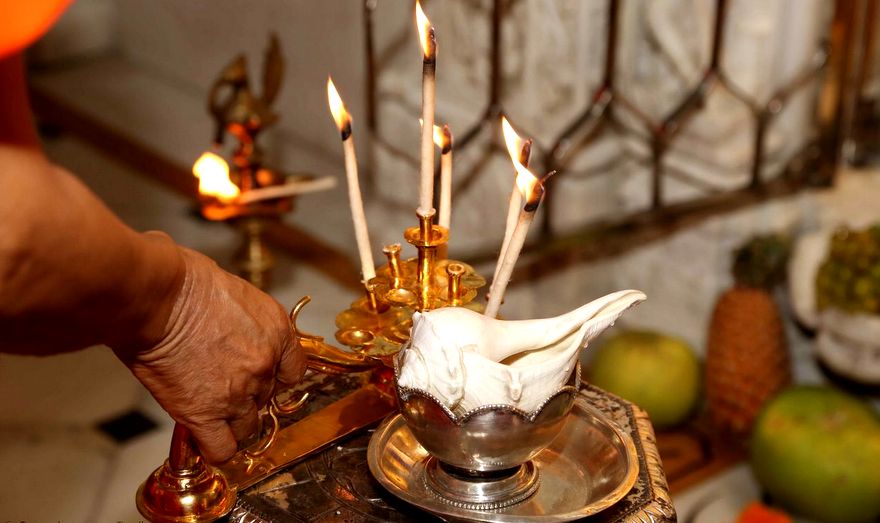
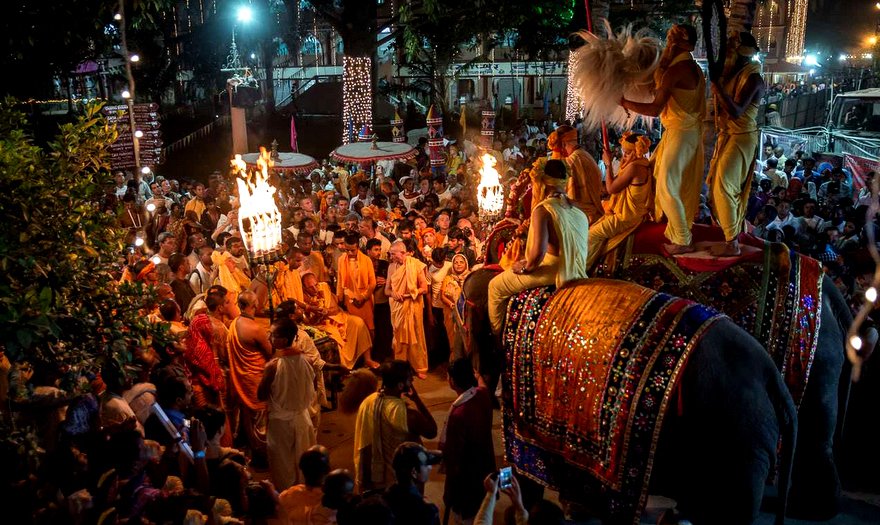
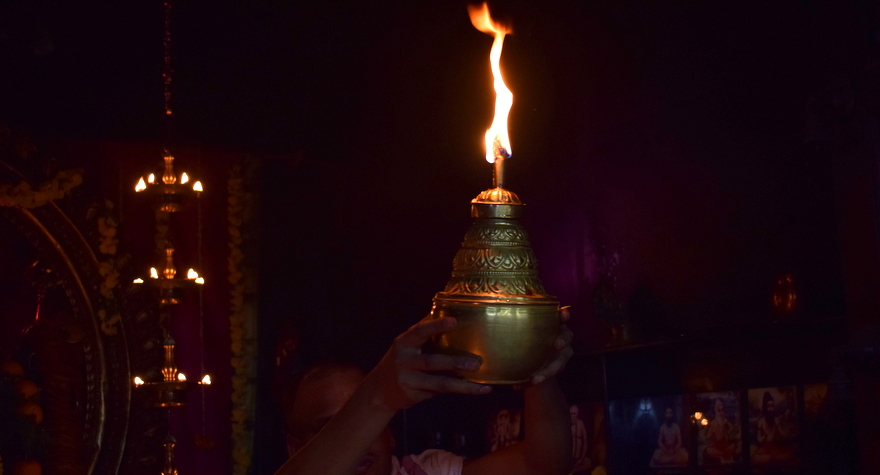











The vedic arathi involves the chanting of the sloka from the Upanishads. na tratra suryo bhaati, na chandra taarakam, nemaa vidyute baati kutoyam agniH| tam eva bhantam anubhaati sarvam tasya bhaataa sarva idam avibhaati. This sloks is in at least two Upanishads. It says – sun is not needed to illumine you, neither the moon nor the stars, not even the electricity – how can this small light illumine you – because you the very light and I do not need a light to the light. and in your light, only everything shines.